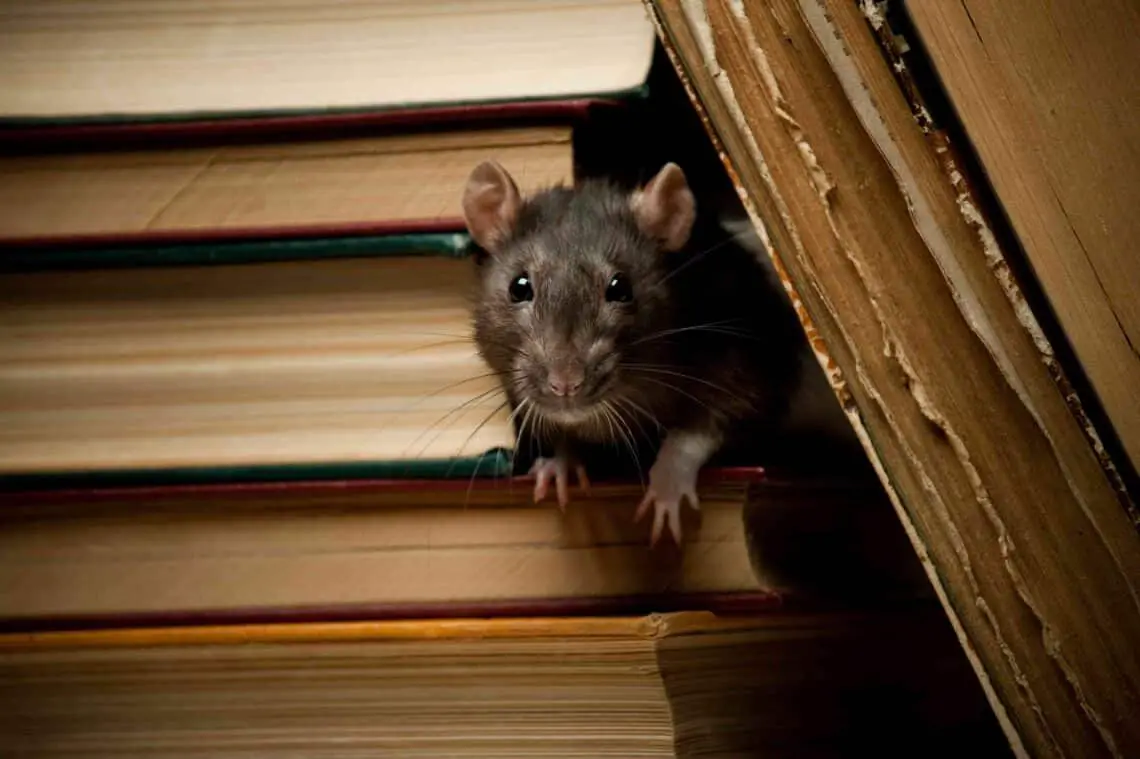Introduction
Are Rat Nocturnal: Rats, the ubiquitous rodents that have managed to adapt and thrive in diverse environments across the globe, have long been subjects of curiosity and sometimes even disdain. Among the many questions that pique our interest about these creatures, one often asked is whether rats are nocturnal. Indeed, understanding the daily rhythms and habits of rats holes is not only a matter of scientific inquiry but also holds practical significance in various aspects of human life, from pest control to wildlife management. Nocturnality, as a term, refers to an organism’s preference for activity during the night, when darkness blankets the world. Many animals exhibit nocturnal behavior, which can be attributed to a combination of factors such as predator avoidance, temperature regulation, and resource availability.
Rats are prolific survivors and have been living alongside humans for thousands of years, it is natural to wonder if they, too, are creatures of the night. To uncover the nocturnal tendencies of rats, one must delve into the intricate world of their biology, ecology, and behavior. These factors interplay to determine when and where rats are most active. This also opens a gateway into the broader realm of circadian rhythms, the internal biological clocks that govern an organism’s daily cycle of activity and rest. Understanding the daily life of rats and their preference for nighttime activity.
Can offer valuable insights into their ecology, impact on ecosystems, and interactions with humans. In the world of rats, shedding light on their nocturnal tendencies and the reasons behind them. We will delve into the fascinating intricacies of rat behavior, from their foraging patterns in the cover of darkness to their ability to adapt to urban environments. Along the way, we will also examine the implications of their nocturnal habits for pest control strategies, wildlife conservation efforts, and our broader understanding of the natural world.

Do rats come out during the day?
When are rats and mice active? Rodents are naturally active at night, although when they live near humans they’re more likely to come out during the day too. They’re great climbers and swimmers, so they can live in a variety of habitats.
Food Foraging: Rats are opportunistic feeders, and their quest for sustenance can drive them to venture out during the day. When food sources are scarce or competition is high, rats may become more active during daylight hours to secure their next meal. This behavior is especially common in areas with a high human population, where rats often scavenge for discarded food.
Environmental Factors: Rats are highly adaptable creatures, and their activity patterns can be influenced by environmental conditions. For example, in regions with extreme temperatures or limited shelter, rats may emerge during the day to regulate their body temperature or find a more suitable nesting site.
Reproduction and Nesting: Female rats, in particular, may be observed during the day when they are caring for their young or relocating them to safer nesting locations. This maternal instinct can lead them to be active during daylight hours, as they prioritize the well-being of their offspring.
Why do rats run at night?
However, rats are generally nocturnal. You will see rats come out into your home, in dumpsters and garbage, generally, they get more active at night. The darkness helps protect them from predators, including people. However, there are also nighttime predators that are fond of rats, such as owls.
Predator Avoidance: One of the primary reasons rats are predominantly nocturnal is to avoid predators. Rats have a multitude of natural enemies, including owls, hawks, snakes, and larger mammals. By coming out at night when many of these predators are less active, rats reduce their chances of becoming prey. The darkness a protective cloak, making it harder for predators to spot them.
Thermoregulation: Rats are highly sensitive to temperature changes. They are more comfortable in cooler environments, and nighttime typically offers lower temperatures than the scorching heat of the day. This makes nighttime an ideal time for rats to forage for food and engage in other activities without overheating.
Camouflage: Rats have adapted to blend in with their surroundings, which are often dimly lit during the night. Their fur coloration and behavior make them less conspicuous in the dark, reducing their chances of being detected by both predators and humans.
Are rats scared of humans?
Rats are afraid of human activity, mostly because humans are so much larger than they are. Rats also fear predators such as hawks, eagles, and other birds of prey. Other animals that rats are afraid of include your cat as well as rat terriers and other dogs that hunt rodents. Rats fear becoming a meal for a snake.
Natural Wariness: Rats, by nature, are cautious and wary animals. This wariness is not specific to humans but extends to any potential threat. Their survival instincts have honed their ability to detect and respond to danger, and this includes approaching humans with caution.
Social Learning: Rats are known for their ability to learn from experience and from observing the behavior of other rats. In areas where rats have had negative encounters with humans such as in laboratories or places with active pest control measures they may develop a fear or aversion to humans based on learned behavior.
Variability in Behavior: It’s essential to recognize that rat behavior can vary among individuals and populations. Some rats may be more cautious and avoid humans, while others might become accustomed to human presence in urban environments and display less fear.
Food-Related Behavior: Rats are opportunistic feeders, and they often associate humans with a readily available source of food. In some situations, this association can lead rats to approach humans without exhibiting fear, especially if they have learned to scavenge for food scraps.
Will rats bother you while sleeping?
Although they do not interact well with humans, wild rats have been known to bite when they feel threatened or are fed by hand. In addition, when searching for sustenance, these nocturnal animals may bite sleeping individuals.
Noise: Rats are not inherently quiet animals, and their activities can generate noise. Scratching, gnawing, and scurrying sounds may be audible, especially if rats have found their way into your walls, attic, or basement. In some cases, these noises can disturb your sleep, particularly if you are a light sleeper.
Location: The impact of rats on your sleep can vary depending on where they are in your home. If they are in close proximity to your bedroom, you are more likely to hear their activities and be affected by them. Rats tend to be more active at night, so if their nest or food source is nearby, the noise can be more noticeable.
Population Size: The size of the rat infestation matters. A small number of rats may not generate as much noise or disturbance as a larger colony. Larger infestations are more likely to result in increased activity levels, which could affect your sleep.
Response to Light: Rats are generally averse to light, so they tend to be more active in the dark. If you turn on lights in your home during the night, it may temporarily deter them from being active near those areas.
Will rats go away if no food?
It takes four or five days for a rat to die of starvation, but if they can’t find any food at all, they will usually move on to a new spot before they die. The more active they are, the faster they will dehydrate and deplete their energy reserves, so the less food available, the less active they will be.
Resourcefulness: Rats are highly resourceful animals and can survive on a variety of food sources. While a lack of easily accessible food may deter them to some extent, it does not guarantee they will leave. Rats can scavenge for a wide range of food, including garbage, pet food, insects, and even plant matter.
Stored Food: Rats are known to store food in hidden locations. Even if you remove readily available food sources, rats may still have hidden stashes that sustain them. This behavior is especially common in environments where they feel safe and secure.
Neighboring Food Sources: Rats can travel considerable distances in search of food. If your neighbors have food sources that attract rats, they may continue to be a nuisance in your area, even if you’ve removed food from your property.
Survival Instinct: Rats are driven by their survival instincts, and they may become more determined to find food when resources are scarce. This can lead to increased foraging and exploration of your property.
Will a rat come near me while I sleep?
What most people mistake for bites are the fact that rats will crawl all over you while you’re sleeping. These researchers explain that a rat will not biting you, but it’s sharp little claws and feelers that are on its feet will become irritating to you and give you the feeling that you have been bitten by a rat.
Nocturnal Behavior: Rats are primarily nocturnal creatures, meaning they are most active during the night. This is when they forage for food, socialize, and engage in other activities. Consequently, the chances of a rat coming near you while you sleep are higher at night when they are most active.
Proximity to Rat Nest: If your sleeping area is located close to where rats have established a nest, their nocturnal activities may bring them into your vicinity. Rats are territorial, and they may explore their surroundings, including your sleeping area, if they have nests nearby.
Food Attractants: Rats are attracted to food sources. If you have food or food remnants in your sleeping area, it could attract rats. It’s crucial to keep food securely stored and not leave food out in areas where rats may access it.
Environmental Factors: Certain environmental conditions can influence rat behavior. For example, in colder weather, rats may seek warmth and may be more likely to venture indoors, including into sleeping areas, in search of shelter.
Are rats afraid of light at night?
While rats are comfortable in the light, they will typically avoid it simply due to their nature. There are also certain types of lights that they may make effort to avoid, such as flashing lights. That is why so many companies sell light machines designed to deter rats; they have their basis in fact.
Nocturnal Nature: Rats are naturally adapted to low-light conditions, and they have excellent night vision. This adaptation allows them to forage for food, navigate, and carry out their activities during the night when they are less likely to encounter predators.
Avoidance of Bright Light: Rats tend to avoid bright light, especially sudden or intense light sources. When exposed to such light, they may exhibit avoidance behavior, which includes fleeing to dark areas or seeking cover.
Caution and Alertness: Rats are cautious animals that rely on their senses to detect potential threats. When exposed to light at night, they may become more alert and wary. This heightened awareness helps them assess whether the light source poses a danger.
Adaptation to Urban Environments: In urban areas, rats often encounter artificial lighting from streetlights, buildings, and other sources. Over time, they may become more tolerant of moderate levels of light and adjust their behavior to navigate and forage in these conditions.
Do rats try to bite humans?
Rats are generally not aggressive towards humans and will only attack if they feel threatened or cornered. However, there have been cases of rats biting people, especially children. Rat bites can be dangerous, as they can transmit diseases such as rabies, leptospirosis, and tetanus.
Provocation: Rats are prey animals, and their first instinct when confronted by a perceived threat is to flee or hide. If a rat feels cornered or believes it has no escape route, it may bite as a last resort in self-defense. This can happen if someone attempts to handle or trap a rat without proper training or equipment.
Protection of Young: Female rats can become protective and defensive if they perceive a threat to their offspring. In such cases, they may bite to defend their nest or pups.
Food-Related Bites: Rats are opportunistic feeders, and they may bite if they associate a human hand with food. This is more likely to occur in situations where rats have become accustomed to being fed by humans, such as in some urban areas or when people leave food within easy reach of rats.
Illness or Injury: Rats that are sick, injured, or in pain may be more likely to bite out of fear or discomfort. A rat with a medical issue may react defensively if approached. Sometimes, rat bites occur when a person unintentionally comes into contact with a rat, such as when reaching into a dark space where a rat is hiding.

Conclusion
In rats nocturnal, a multifaceted one that has captivated the curiosity of scientists, pest control experts, and the general public alike. Through our exploration, we have uncovered a nuanced understanding of rat behavior and their daily rhythms. Rats, it turns out, are not strictly nocturnal creatures, but rather they exhibit a flexible and adaptive approach to their activity patterns. While they are known to be more active during the night, their behavior can vary based on environmental factors, resource availability, and even individual preferences. This adaptability has contributed to their remarkable success in thriving in a wide range of habitats, from bustling urban centers to remote wilderness areas.
One of the key factors influencing rat behavior is their circadian rhythms, internal biological clocks that govern when they are most active. These rhythms are finely tuned to factors such as light and temperature, allowing rats to optimize their foraging and reproductive activities. This adaptability ensures that rats can exploit resources efficiently, which has contributed to their reputation as opportunistic scavengers. Understanding the daily rhythms of rats has significant practical implications. In the realm of pest control, knowing when rats are most active can inform the timing of interventions, making them more effective. Similarly, in wildlife management and conservation efforts, understanding rat behavior helps mitigate their impact on native species and ecosystems.
A window into the broader field of animal behavior and ecology. It reminds us of the intricate web of interactions that define the natural world, where species like rats have evolved strategies to coexist with humans and adapt to the changing landscapes we create. In the end, while rats may not fit neatly into the category of strictly nocturnal animals, they remain an endlessly fascinating subject of study and contemplation. Their adaptability and ability to thrive in diverse environments serve as a testament to the remarkable resilience of nature’s creatures. Thus, the of whether rats are truly nocturnal unveils not just insights into rat behavior but also a deeper appreciation for the complexity of the natural world we share with these adaptable rodents.





No Comments